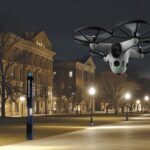One fear shared by many campus security professionals is that their electronic security system won’t work when they really need it. Video surveillance systems can catch terrorists, thieves and other criminals, but what about the fine print in so many other stories where the villain was simply “unrecognizable by the camera?”
Fortunately, this situation is preventable. Unfortunately, you’re probably not doing all you can to prevent it. Many organizations rely on audits to verify proper controls and procedures in their facilities. An inventory is a form of an audit, as is an accounting or compliance audit.
Campuses now consider their video surveillance system to be a critical part of their operation, so why not perform a regular review of that system as well? Given the advantages of such an audit, it’s surprising that this is not a more widespread — or even mandated — activity.
Security Camera System Testing Is Subjective
It may be tempting to extend this concept to all electronic security systems in a facility. Certainly, the regular testing, adjustment and calibration of all of your systems is important. But it’s not likely these other systems will require a regular third-party audit for one simple reason — an alarm, intercom, access control or other related system does not have a subjective component. It is easy to define the perfect operation of these systems and ensure they live up to expectations.
Video, however, lends itself to more grey areas that benefit from another set of eyes and expertise to verify proper operation. Any audit worth its salt looks at two elements: 1) If the system is performing as mandated and 2) If improvement is needed, what can be done to improve performance.
What an Auditor Should Review
To sum it up, a campus needs to know three things:
1. System Functionality: This area can be broken down into the various subsystems, but the overall question is simple: Is everything working the way it should? Are images from cameras free of distortion and interference and sharply focused? Do pan/tilt/zoom (p/t/z) cameras move when told and, more importantly, stop moving on command as well? Are images recorded as needed, and can you play them back on demand (subject to the limitations of your system)?
While these may seem like common-sense questions, it is surprising how many operators learn to compensate for systems that have deteriorated through time. Sometimes an alternate camera is used, or an operator will wait until the subject gets closer to see if a suspect can be recognized.













